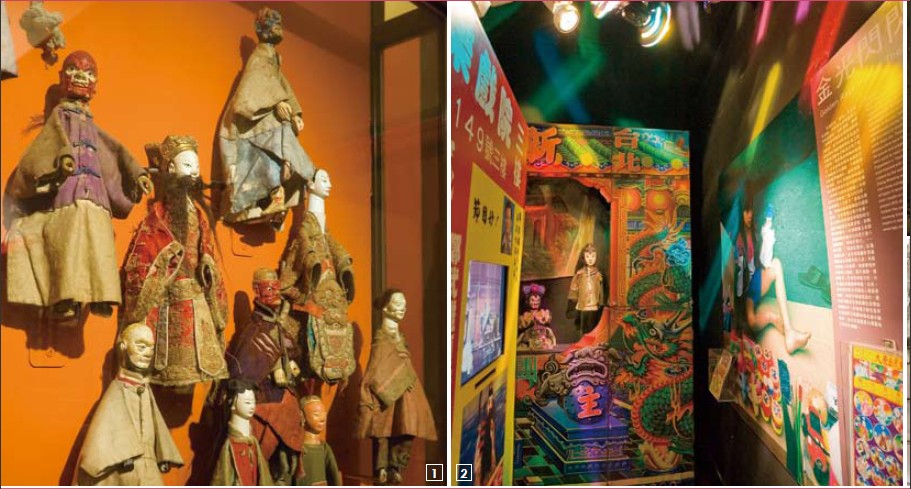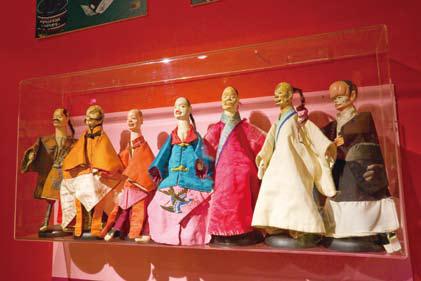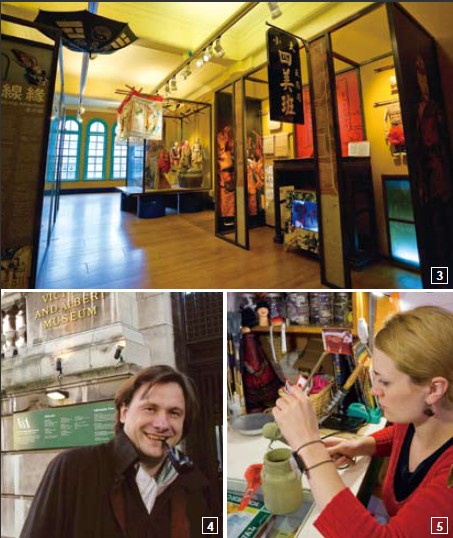The Lin Liu-Hsin Puppet Theatre Museum
The museum is constantly collecting and adding new pieces to its expansive collection of representative treasures. The trove already includes traditional and modern Taiwan Jinguang (Golden Light) theatre puppets, marionette puppets, stage props, puppets from China and Southeast Asia, shadow puppets, and a fantabulous haul of both masks and performance scripts from Africa and South America. This amazing collection contains 5200-plus pieces in total! The museum’s unique approach and unmatched collection has quickly gained itself a measure of fame in overseas quarters. There is a constant stream of visitors from faraway lands that comes knocking on their doors. Lin Liu-Hsin Puppet Theatre www.taipeipuppet.com/english/ Transportation: Take the MRT Tamsui Did you know that the Lin Liu-Hsin Puppet Theatre Museum is right up there with most dynamic and unusual puppetry museums in the entire world? The Taiyuan Arts and Culture Foundation established the museum in 2000 to proclaim the wonderful aesthetics of traditional puppet theatre. The museum’s stellar in-house performance troupe has repeatedly marched off on overseas excursions, conquering the hearts of aficionados in Paris, Italy, England, Russia, Belgium, and other lands. The dazzling performances capture the imagination of overseas people while at the same time stimulating a new field of view for Taiwan puppetry.
Did you know that the Lin Liu-Hsin Puppet Theatre Museum is right up there with most dynamic and unusual puppetry museums in the entire world? The Taiyuan Arts and Culture Foundation established the museum in 2000 to proclaim the wonderful aesthetics of traditional puppet theatre. The museum’s stellar in-house performance troupe has repeatedly marched off on overseas excursions, conquering the hearts of aficionados in Paris, Italy, England, Russia, Belgium, and other lands. The dazzling performances capture the imagination of overseas people while at the same time stimulating a new field of view for Taiwan puppetry.Information
Museum
Tel: (02) 2556-8909
Add: 79, Xining N. Rd.
Hours: 10:00-17:00 (closed on Mon)
Website:
(Red) Line to Shuanglian Station and
transfer to the Red 33 bus headed towards
Dadaocheng Wharf
Admission: Adults NT$120 / Children NT$80
Package ticket (museum and Nadou
Theatre): Adults NT$200 / Children NT$180 This museum is in no way a place of static and motionless displays. This museum is “alive”. In just the DIY interactive area, you have puppet shows, hand-puppet shows, in the rooftop garden Vietnamese water puppets, and a heck of a lot more too. The method for manipulating each type of puppet is quite different, and visitors are encouraged to try and get a feel for the tremendous skill that puppet-masters bring to the art. On the first floor, you can visit the workshop of Chen Xi-huang, a renowned authority on traditional Taiwanese puppetry, where not only can you take in wonderful live demonstrations, but also watch Master Chen and his apprentices carving new puppets. On the second floor are the special exhibits, and on the third floor are the permanent displays. On these two levels, you can spend hours checking out the fascinating materials explaining the widely varied puppetry traditions of different countries, including Cambodian shadow puppet theatre, Indian human puppets, human puppets from Burma, and Vietnamese water puppets. The fourth floor houses an exciting dedicated display on Vietnamese water puppetry.
This museum is in no way a place of static and motionless displays. This museum is “alive”. In just the DIY interactive area, you have puppet shows, hand-puppet shows, in the rooftop garden Vietnamese water puppets, and a heck of a lot more too. The method for manipulating each type of puppet is quite different, and visitors are encouraged to try and get a feel for the tremendous skill that puppet-masters bring to the art. On the first floor, you can visit the workshop of Chen Xi-huang, a renowned authority on traditional Taiwanese puppetry, where not only can you take in wonderful live demonstrations, but also watch Master Chen and his apprentices carving new puppets. On the second floor are the special exhibits, and on the third floor are the permanent displays. On these two levels, you can spend hours checking out the fascinating materials explaining the widely varied puppetry traditions of different countries, including Cambodian shadow puppet theatre, Indian human puppets, human puppets from Burma, and Vietnamese water puppets. The fourth floor houses an exciting dedicated display on Vietnamese water puppetry.
 The director of the museum is Dr. Robin Ruizendaal, an academic expert and passionate lover of puppetry from the Netherlands, who is fluent in Chinese. He oversees both the in-house Taiyuan Puppet Theatre Company and the Nadou Theatre Company. The signature play of the Taiyuan troupe is “Marco Polo,” presented as a “West meets East” love story, presented by using traditional Taiwanese glove-puppet, with some clever Taiwanese and Italian narration sprinkled into the action for innovative fun. The play has become a favorite with both local and overseas theater devotees.
The director of the museum is Dr. Robin Ruizendaal, an academic expert and passionate lover of puppetry from the Netherlands, who is fluent in Chinese. He oversees both the in-house Taiyuan Puppet Theatre Company and the Nadou Theatre Company. The signature play of the Taiyuan troupe is “Marco Polo,” presented as a “West meets East” love story, presented by using traditional Taiwanese glove-puppet, with some clever Taiwanese and Italian narration sprinkled into the action for innovative fun. The play has become a favorite with both local and overseas theater devotees.
Beyond all this, the energetic and creative museum team plans all sorts of intriguing puppetry exhibits, puppet-carving workshops, puppet-master demonstration shows, DIY puppet theatre, traditional puppetry skills sessions, and other types of fun and educational programs. Interest is sustained and feverish, and the troupe master, Chen Ying-cun, often brings up the story of a Chinese-puppetry worshiper who came all the way from France to study the production and performance technique for a full year at the museum, showing amazing commitment.
In this splendid cultural space, you get deep thoughts explained in simple, easy to follow designs and displays, and whatever your origins—male, female, nationality, skin color—everyone will enjoy tremendously when exploring the many delightful contributions to the art from the puppetry cultures in lands around our planet. Adding to the sense of joyous play are the many different types of plays and shows staged each weekend. And if you’ve got your own group of 20 or more, you can even book your own shows and see whatever it is that you like best!

![Taiwan.gov.tw [ open a new window]](/images/egov.png)
